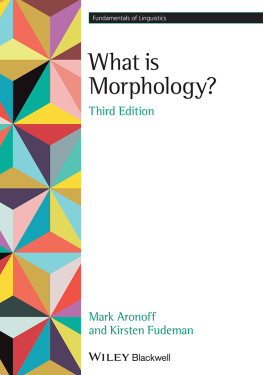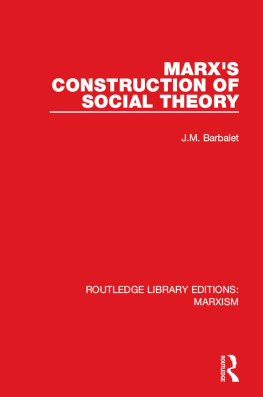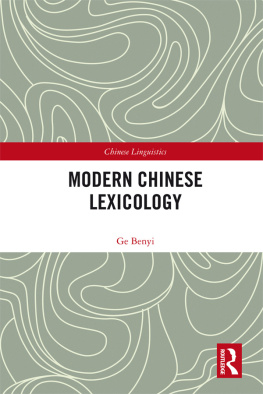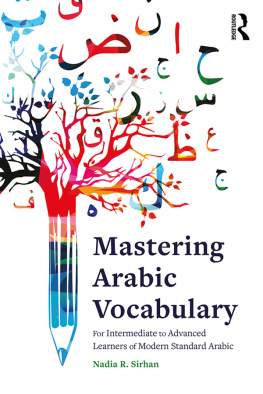Table of contents
The Morpheme
Interface Explorations 31
Editors
Artemis Alexiadou
T. Alan Hall
De Gruyter Mouton

ISBN 978-1-5015-1078-6
ISBN (PDF) 978-1-5015-0256-9
ISBN (EPUB) 978-1-5015-0258-3
ISSN 1861-4167
Library of Congress Cataloging-in-Publication Data
A CIP catalog record for this book has been applied for at the Library of Congress.
Bibliographic information published by the Deutsche Nationalbibliothek
The Deutsche Nationalbibliothek lists this publication in the Deutsche Nationalbibliografie; detailed bibliographic data are available on the Internet at http://dnb.dnb.de .
2015 Walter de Gruyter Inc., Boston/Berlin
www.degruyter.com
Chapter Dependencies
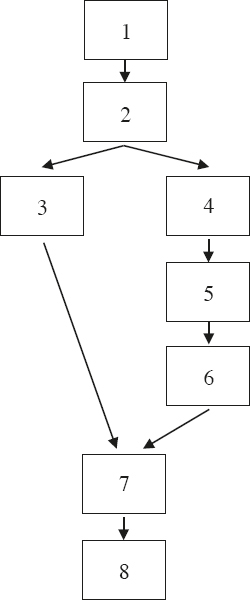
Preface
Im not as dumb as you thinkIve seen how it worked out. I guess I can put two and two together.
Sometimes the answers four, I said, and sometimes its twenty-two.
Dashiel Hammett, The Thin Man
*
As far as its contents and title are concerned, this book could have been called The Morphemes , since the distinction between Roots and functional morphemes is central to the theory that is developed here. But because my main focus is on the central importance of the discrete piecethat is, the morphemeI have opted for the singular version.
There is also something to be said about the books subtitle ( A Theoretical Introduction ). This classification reflects my primary goals for this work. There are three of these.
The first goal is that it will function as a component in a course (or course sequence) on morphology, at the introductory graduate (or advanced undergraduate) level; this is the kind of course that I have been teaching at the University of Pennsylvania over the past several years, and a fair amount of the material that has found its way into the work, especially in chapters 4-6, is drawn from those classes.
The second goal is that it will serve as a clear statement of some of the central themes in Distributed Morphology, and thus prove useful to advanced researchers from other subareas (or adjacent areas of language research) who are interested in the general theoretical issues that are addressed here, and in the particular view of the morpheme that has been developed in this framework.
The third goal is that it will connect a number of ideas that have been investigated within Distributed Morphology and related frameworksnotably, the relations between the theory of the morpheme and the Vocabulary Insertion operation on the one hand, with the phenomena of syncretism, blocking, and allomorphy on the otherin a way that will be of interest to researchers working in a variety of areas. My impression from the literature is that, while substantial progress has been made in understanding the phenomena just mentioned, there is a need for a systematic overview of how the different parts of the theory might fit together.
Along with the three goals just mentioned, it is worth mentioning what this book is not. For one, it is not intended to be a textbook per se, even if it is a book that could be used in a class. While it offers an introduction to the morpheme, its concerns are often directed at theoretical points that are complex and open to many directions of resolution. It does not start with a slow introduction to the phenomena that are considered to be part of morphology; instead, it starts with a core notionthe morphemeand proceeds from there to two of the central theoretical questions for the morpheme, syncretism and allomorphy. Moreover, there are no exercises of the type that are central to texts. This might mean that it is somewhat closer to being a handbook. In a limited sense, this is probably true. However, a handbook is typically regarded as a comprehensive overview of the literature up to a point, and I have made no attempt to give a detailed overview of the literature here. Instead, I have tried to connect the essential components of one view of the morpheme into a coherent system. My hope is that the overarching system will allow specific points of theoretical interest to be understood and developed further; i.e., that those who use the book will be in a position to understand the primary literature, and to make contributions to it.
**
Regarding what is covered in the book, and the scope of the background literature that is cited
As far as the time-period of the work covered here goes, I think it is fair to say that there is no good time to finish a work like this one. Looking back into the work I see several things that could have been done differently, connected in a completely different way, and so on. Looking at the present, it is, of course, impossible to keep updating a book in a way that reflects a field that is developing continuously. In practical terms, this means that the book omits some of the most recent research in this area; a large component of this book took its current form in the summer and fall of 2010, and in making revisions and additions over the past few years I have not included works published after that time.
As far as the scope of the work is concerned, I have tried to concentrate on the theory of the morpheme (and on the attendant theory of Vocabulary Insertion) as much as possible. The focus on Vocabulary Insertion (and on syncretism, allomorphy, and blocking) reflects this primary concern. A number of other issues that are part of the theory of morphology (understood in an informal sense) are not addressed in this work. In my view, an overview of the morpheme would ultimately have to be supplemented by (1) an overview of the theory of affixation (connecting with syntax); and (2) an overview of the theory of morphophonology (connecting primarily with phonology). But those books have not been written yet.
The book assumes that readers are familiar with many themes in current theoretical work in linguistics. For reasons that will become obvious in the pages to come, it is not practical (or desirable) to cut off the theory of the morpheme from syntax, phonology, and semantics. Thus, much of the discussion in this book assumes that readers have ample background in current approaches to generative syntax, and, to a lesser extent, phonology.
It is possible to use this book in a few different ways; I have tried to summarize these in the graph of chapter dependencies that appears a few pages back.
***
The material in this book was developed over the course of several years. At one point in around 1999, Morris Halle and I worked out an analysis of the verbal system of Latin. One idea was that the introduction to that piece of work would be a general introduction to Distributed Morphology. This project did not materialize in the form that was originally conceived (although a few small parts of the analysis of Latin verbs have surfaced in various places, including here). I hope that some of the insight and clarity that is found in all of Morriss work has made its way into these pages.
Chapters containing a general introduction to the theory slowly took form after 2000, and I used early versions of these in classes I taught in Brazil and Argentina in 2004. I also used these chapters as introductory material in a few of the seminars I taught at University of Pennsylvania in the following years. After several thorough rewritings, this initial material was turned into something like the current form in 2010, when the contents of most of the later chapters was added as well. After that the draft was edited substantially, with an emphasis on overall coherence, and on the introduction of illustrative examples. A draft was nearly completed during the summer of 2013, but I was not ready to let it go at that time; then work on other projects dominated my attention. Finally, the conclusion and the final preparations for publication were completed during the 2014-2015 academic year.


